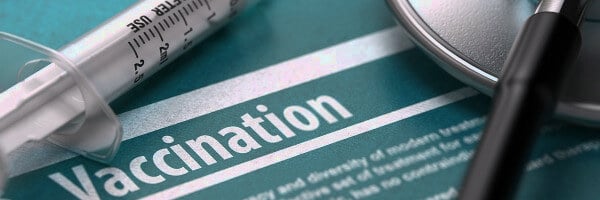(Translated by Google) Good service and kindness Edith is a very kind person (Original) Buena atención y amabilidad Edith es una persona muy amable
Read More
How Many People Have HPV?
Posted: May 3rd, 2024 at 12:00AM

Human papillomavirus (HPV) infections are incredibly common. In fact, more than 90% of sexually active men and 80% of women will have an HPV infection at some point in their lives, according to the Minnesota Department of Health. In this blog, learn more about how many people acquire HPV infections each year, which groups of individuals display a higher HPV prevalence, and how to stay safe and healthy from this common sexually transmitted infection.
How Many People Have an HPV Infection?
According to the Centers for Disease Control and Prevention (CDC), more than 42 million peoplein the United States have some sort of HPV infection that is capable of causing disease. Each year, approximately 13 million Americans, some of whom are teenagers, become infected.
If we look at this annually, an additional six million people acquire an HPV infection each year.
HPV Infections by Age Group
Is human papillomavirus more common in certain age groups?
One piece of research looked at a representative sample of females in the United States and found that human papillomavirus was most prevalent (44.8%) in women between the ages of 20 and 24 years. 26.8% fell into the age group of 14 to 59 years, and, more specifically, 33.8% fell into the 14-to-24-year-old age category.
Why Do More Men Have Human Papillomavirus?
As we mentioned, HPV infection is more common in men than in women. In addition, unlike women, men exhibit high levels of human papillomavirus (HPV) regardless of how old they are. Women, on the other hand, display a decrease in infection rates as they get older.
But why?
It could be that the male immune system simply doesn't have as strong of a response to HPV infection. However, there's more work to be done: Namely, scientists don't yet know if the higher rates of human papillomavirus are new infections, chronic active infections, or infections that experience alternating periods of latency and activity.
How Many Types of HPV Are There?
One thing that makes the study of human papillomavirus (HPV) so challenging and time-consuming is that there are more than 150 types of HPV strains (or types). Thankfully, there is only a small number of high-risk HPV types that can cause health problems by turning normal cells into abnormal cells.
High-Risk HPV Strains/Types
Out of the 150 types of HPV, there are 14 strains, in particular, that can cause the body to develop cancer: 16, 18, 31, 33, 35, 39, 45, 51, 52, 56, 58, 59, 66 and 68. (To be clear, depending on the source, the HPV types that are classified as "high-risk" can vary.) These high-risk types of HPV infection account for roughly 70% of invasive cervical cancer in infected persons. More specifically, HPV 16 has been closely connected to anal and throat cancer.
However, these types don't always lead to HPV-related cancers.
Low-Risk HPV Types
Low-risk types of genital HPV infection include 6, 11, 42, 43, and 44.
What are the Risk Factors?
Because HPV, like some other sexually transmitted infections, spreads through skin-to-skin contact, penetrative sexual intercourse isn't needed to become infected. Sexually active individuals engaging in even oral sex can spread HPV or become infected.
Will an HPV Infection Go Away on Its Own?
Does an individual have to be treated for an HPV infection, or will it clear up by itself?
The Centers for Disease Control and Prevention says that the majority (90%) of the time, a genital HPV infection will go away on its own in a couple of years without causing any sort of health problems.
However, if it doesn't go away and the individual doesn't seek treatment, health problems can arise, including:
- Genital warts.
- Cervical cancer.
- Oropharyngeal cancer.
- Anal cancer.
- Vulvar cancer.
- Vaginal cancer.
Genital Warts
Genital warts are usually present as bumps small in size — red, pink, or skin-colored. They appear in and around the sex organs. Sometimes, they're so small that it's easy to miss them. Commonly, genital warts appear in groups of three or four, and they can grow and spread very quickly.
While genital warts usually don't cause any pain, the individual may experience discomfort, bleeding, or itching at the infected site. Thankfully, the body will usually eliminate the HPV infection before genital warts have a chance to form.
HPV and Cancer
While most cases of genital human papillomavirus won't lead to cancer, some types have been linked with cancer of the lower uterus, which eventually leads to cervical cancer, since the cervix is part of the uterus.
Almost all cases of cervical cancer are caused by HPV. However, cervical cancer can take 20 years (or even longer) to develop in a person who has HPV. During this time, that individual likely won't display any symptoms.
The American Cancer Society estimates that in the United States in 2024, we'll see about 13,820 new cases of invasive cervical cancer, and approximately 4,360 women will die from cervical cancer.
How can people stay healthy?
Preventing HPV, Genital Warts, and Cervical Cancer
How can sexually active adults avoid acquiring and spreading sexually transmitted diseases like HPV?
The HPV Vaccine
First and foremost, the best thing an individual can do is get the HPV vaccine. The HPV vaccine is recommended for children who are between the ages of 11 and 12 years, although it can be given as early as nine years of age. The reason for administering the HPV vaccine so early is that the response to the injection is better for this age group.
Additionally, it's also crucial that individuals receive the HPV vaccine before they become sexually active. Assuming individuals follow this guidance, the HPV vaccine has been found to be nearly 100% effective, says the Centers for Disease Control and Prevention. Thankfully, research tells us that over time, more and more people are getting the HPV vaccine. Other age groups can also benefit from the HPV vaccine. Unvaccinated individuals can follow up with a clinician to discuss the HPV vaccine.
Pap Smears and HPV Screening
How else can an individual determine their HPV status?
Sexually active women should also get their routine pap smear tests to screen for precancerous changes in the cervix that could indicate a risk of cervical cancer.
The American College of Obstetricians and Gynecologists suggests that women (or any individuals with a uterus and cervix) between the ages of 21 and 29 years get a pap smear test every three years. Women ages 30 to 65 years should get both a pap smear test and an HPV test every five years, or a pap smear test alone every three years. And after the age of 65, as long as the pap test results have always been normal, women typically no longer need a pap smear test.
Important note: HPV tests and pap smears aren't the same thing. HPV tests look for the presence of human papillomavirus, which can cause the cells on the cervix to change. A pap smear looks for precancerous cells that could turn into cervical cancer. The two tests are done at the same time during the visit.
If you're unsure whether you need a pap smear test, HPV test, or both, speak with your healthcare provider for guidance. They should be able to tell you what you need, whether it's a pap smear, HPV screening, or a combination of the two, as well as with what frequency to get tested.
What about for men or those without a uterus and cervix? Currently, there is no routine screening test similar to those for women. Men with symptoms as listed above are recommended to seek evaluation and guidance from their medical provider. They should definitely also get the full HPV vaccine series for full protection.

OMG, so e7 is one-of-a-kind in Vegas. My husband needed a TB Skin Test and I was able to book for the next hour. The staff actually answers the phone, right away. They are kind and nice. Upon arrival, at e7 Windmill location, the receptionist (who's name I do not have) was so kind, nice, and caring. She's a gem. During our brief wait for my husband's appointment, I witnessed the interaction between staff members and also, their clients. It's amazing that the entire, big e7 Team loves each other and what they do. You do not see this anywhere else. The team's interaction was magical. AND then how each staff member interacts with their patient, well... just unique. My husband had Alia, who definitely folded her Angel Wings in to fit in to the treatment room. What an amazing being. So patient, as my husband was on a walker and not so ambulatory. She explained all so clearly and easily. Truly, we have never experienced such CARE not just in Vegas, but anywhere. She also went above-and-beyond for us as to the next step. e7 scared me at first online, but now, they are my Go To and I have already recommended to many. God bless Alia and all. The Team truly LOVE what they do and it shows.
Read More


















